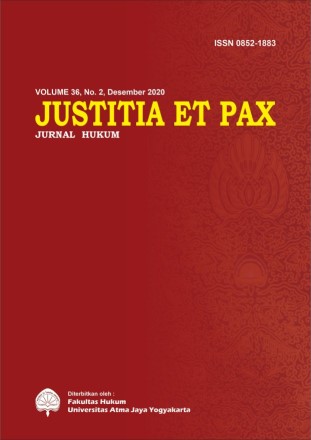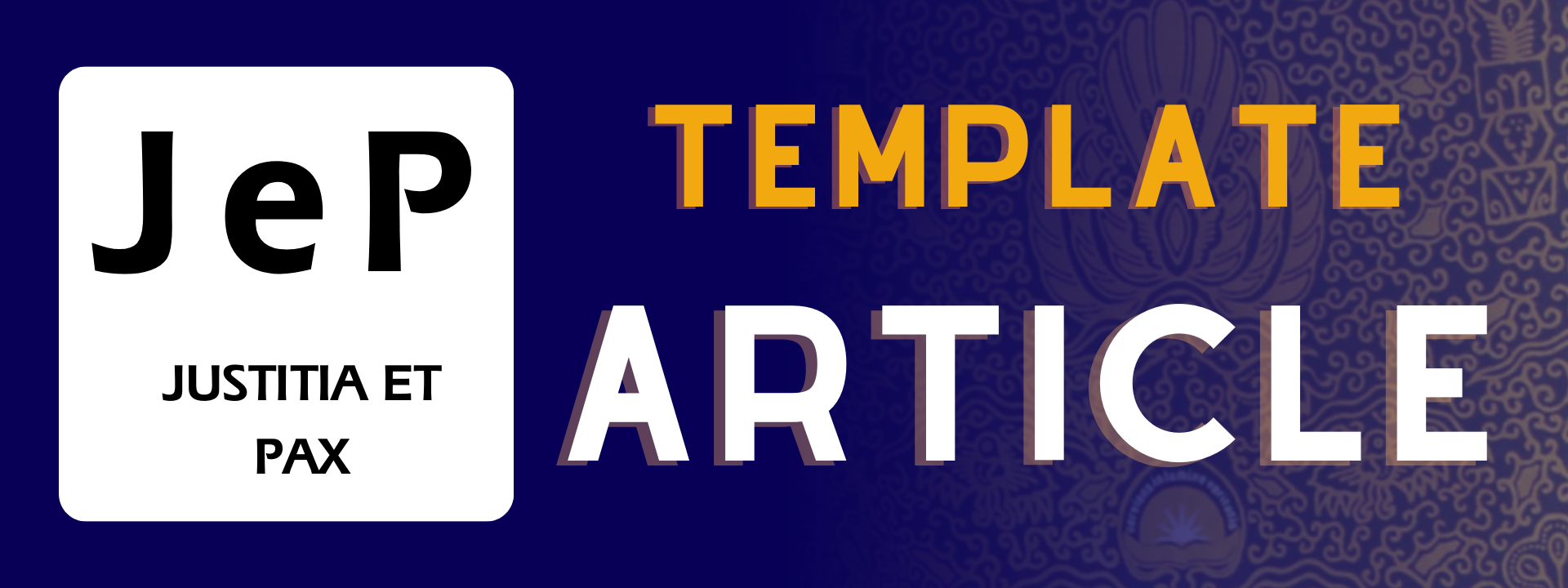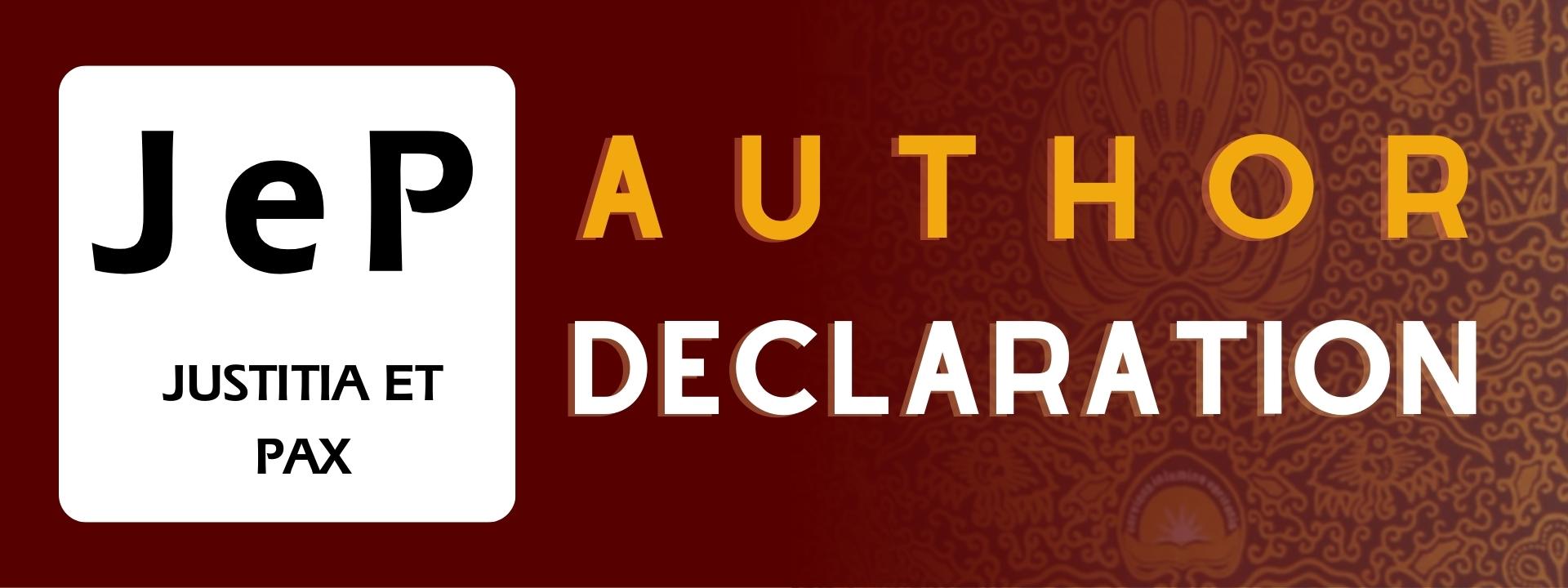HAK DAN KEWAJIBAN PEMILIK BANGUNAN CAGAR BUDAYA DI KOTA MALANG
DOI:
https://doi.org/10.24002/jep.v36i2.2561Keywords:
Cultural Property, Property Owner, Rights, Duties, Responsibility.Abstract
The objectives of this research are to describe the implementation of the rights and duties of the owners of cultural properties (Cagar Budaya) in Malang City, especially the buildings of Cor Jesu School and Kayutangan Church, as well as to describe the responsibilities of the local government in protecting the buildings stipulated as cultural properties as stated in the Law Number 11 of 2010 on Cultural Properties. The status as “cultural property” is stipulated by local government through a recommendation by a Team of Experts in Cultural Property. After the stipulation, the rights and liabilities of the owner of such cultural property take effect and the protection of the property becomes the responsibility of the local government. The approach of this research is empirical, conducted by doing in-depth interviews with the owners of cultural properties, some informants such as the Cultural and Tourism Department of Malang City, and with the Assessor of Cultural Property for those buildings. This approach is done after identifying the rights, duties, and responsibilities dealing with the cultural proprties as stipulated in the Law Number 11 of 2010 on Cultural Property. It is concluded that the law as it is written in the Law still takes great efforts to be implemented in reality, in order to fulfill the requirements stated in the Law.
References
Buku
Cohen, Morris L dan Kent C. Olson, 2016, Legal Research in a Nutshell, West Publishing Co, St. Paul Minn.
Gardner, Bryan A, 2009, Black’s Law Dictionary 9th Edition, West Publishing Company, St. Paul Minn USA.
Green, Thomas A., 1997, Folklore, An Encyclopedia of Beliefs, Customs, Tales, Music, and Art, Oxford, England.
Grondin, Jean, 2005, Dictionary of the History of Ideas, University of Virginia Library Gale Group, Charlottesville.
Harel, Alon, 2005, The Blackwell Guide to the Philosophy of Law and Legal Theory, Golding, Martin P. dan William A. Edmundson, 2005, Blackwell Publishing, USA.
Jane Anderson and Haidy Geismar, 2017, The Routledge Companion To Cultural Property, Routledge, New York.
Marih, Suci R, “Restoran ‘Toko Oen’, Mengintip Uniknya Rumah Makan Nostalgia Ala Tuan Dan Nyonya Belanda Di Kota Malang”, dalam Hardani, Kayato, dan Tim Indscript Writing, 2018, Aku dan Cagar Budaya: Masa Lalu Yang Melebur Dalam Kekinian, Kementerian Pendidikan dan Kebudayaan, Indscript Creative, Bandung.
R.Layton et all., 2011, Destruction and Conservation of Cultural Property, Routledge, London.
Manacorda, Stefano et all, 2011, Crime in the Art and Antiquities World: Illegal Trafficking in Cultural Property, Springer-Verlag New York.
Pusat Bahasa Departemen Pendidikan Nasional, 2001, Kamus Besar Bahasa Indonesia, Edisi Ketiga, Balai Pustaka, Jakarta.
Stamatoudi, Irini A., 2011, Cultural Property Law and Restitution, A Commentary to International Conventions and European Union Law, Edward Elgar, Cheltenham, UK.
Stevan P. Layne, 2014, Safeguarding Cultural Properties. Security for Museums, Libraries, Parks, and Zoos, Butterworth-Heinemann, USA.
Susanti, Diah Imaningrum, 2017, Perlindungan Negara atas Warisan Budaya Bangsa, Setara Press, Malang.
Turku, Helga, 2018, The Destruction of Cultural Property as a Weapon of War: ISIS in Syria and Iraq, Palgrave, Macmillan, London.
Jurnal
Arthura, Ethan, “Poaching Cultural Property: Invoking Cultural Property Law to Protect Elephants”, Journal of International Wildlife Law & Policy, Vol. 17, Issue 4, December 2014.
Cheung, P.T.Y., “Civic Engagement in the Policy Process in Hongkong: Change and Continuity”, Journal of Public Administration and Development, Vol. 31, 2011.
Dian, Azni Mohd dan Abdullah, Nuraisyah Chua, “Public Participation in Heritage Sites Conservation in Malaysia: Issues and challenges”, Procedia - Social and Behavioral Sciences Vol. 101, Nomor 8, November 2013.
Fitria, Isnen, et all, “Conservation of Tangible Cultural Heritage in Indonesia: A Review Current National Criteria for Assessing Heritage Value”, Procedia - Social and Behavioral Sciences 184, May 2015.
Grimsted, Patricia Kennedy, “Nazi-Looted Art from East and West in East Prussia: Initial Findings on the Erich Koch Collection”, International Journal of Cultural Property, Vol. 22, Issue 1, February 2015.
Kim, Jongsok, “The Protection of Cultural Properties in the Republic Korea: Culture Without Context”, Illicit Antiquities Research Centre, Issue 8, Spring, 2011.
Lixinski, Lucas, “A Tale of Two Heritages: Claims of Ownership over Intangible Cultural Heritage and the Myth of Authenticity”, Transnational Dispute Management, Vol. 11, Nomor 2, 2014.
Mastalir, Roger W, “A Proposal for Protecting the ‘Cultural’ and ‘Property”; Aspects of Cultural Property Under International Law”, Fordham International Law Journal, Volume 16, Issue 4, 1992.
Naazima Kamardeen, “The Protection of Cultural Property: Post-Colonial and Post-Conflict Perspectives from Sri Lanka”, International Journal of Cultural Property, Vol. 24, Issue 4, November 2017.
Scott, Geoffrey R. et.all, “Cultural Property, Art And Law In The United States And Turkey”, Law & Justice Review, Volume: IV, Issue: 2, December 2013.
Makalah
Bhat, Ishwara, “Protection Of Cultural Property Under International Humanitarian Law: Some Emerging Trends”, Paper, disajikan pada Seminar on International Humanitarian Law organised by Department of Studies in Law, University of Mysore in collaboration with International Committee of the Red Cross (ICRC), pada tanggal 1 Juni 2000 di Mysore.
Kakiuchi, Emiko, “Cultural Heritage Protection System in Japan: Current Issues and Prospects for the Future”, GRIPS Discussion Papers 14-10, National Graduate Institute for Policy Studies, Tokyo, 2014.
Artikel Koran
Buana, Agung, 2018, “Siaran Pers Belajar Cagar Budaya dengan Fun”, Sekretaris Tim Ahli Cagar Budaya Kota Malang, 8 Desember 2018.
Firmansyah, Devan, “Cagar Budaya di Kota Malang Terancam Punah”, Jawa Pos Radar Malang, 4 Agustus 2018.
Internet
Cultural Properties Department, Agency for Cultural Affairs, JAPAN, March 2015, “Cultural Properties for Future Generations Outline of the Cultural Administration of Japan”, http://www.bunka.go.jp/english/index.htm, diakses pada 27 Desember 2019.
Widianto, Eko, “Belajar Sejarah dan Mengenal Bangunan Cagar Budaya, Sekaligus Berolahraga”, https://www.terakota.id/belajar-sejarah-dan- mengenal-bangunan-cagar-budaya-sekaligus-berolahraga/, diakses pada 12 Oktober 2020.
Suryamalang.com, “Kota Malang Miliki Perda Cagar Budaya”, https://suryamalang.tribunnews.com/2018/03/06/kota-malang-miliki- perda-cagar-budaya-berikut-ini-beberapa-dampaknya, diakses pada 12 Oktober 2020.
Peraturan Perundang-Undangan dan Konvensi Internasional
Convention on the Means of Prohibiting the Illicit Import, Export and Transfer of Ownership of Cultural Property, UNESCO 1970.
Peraturan Daerah Kota Malang Nomor 1 Tahun 2018 Tentang Cagar Budaya (Lembaran Daerah Kota Malang Tahun 2018 Nomor 1).
Undang-Undang Nomor 11 Tahun 2010 Tentang Cagar Budaya (Lembaran Negara Tahun 2010 Nomor 130).
Undang-Undang Nomor 28 Tahun 2014 Tentang Hak Cipta (Lembaran. Negara Republik Indonesia Nomor 5599).
Downloads
Published
Issue
Section
License
Authors who publish with this journal agree to the following terms:
- Authors retain copyright and grant the journal right of first publication with the work simultaneously licensed under a Creative Commons Attribution License that allows others to share the work with an acknowledgement of the work's authorship and initial publication in this journal.
- Authors are able to enter into separate, additional contractual arrangements for the non-exclusive distribution of the journal's published version of the work (e.g., post it to an institutional repository or publish it in a book), with an acknowledgement of its initial publication in this journal.
- Authors are permitted and encouraged to post their work online (e.g., in institutional repositories or on their website) prior to and during the submission process, as it can lead to productive exchanges, as well as earlier and greater citation of published work (See The Effect of Open Access).

This work is licensed under a Creative Commons Attribution-NonCommercial-ShareAlike 4.0 International License.




















